Authorization is the mechanism to determine access levels or privileges related to information system resources including files, services, programs, data and applications.
A sample identity and access management policy for Boston University. Video presented by Thycotic discussing risks and mitigations for privileged accounts. Video presented by Thycotic discussing risks and mitigations for privileged accounts. Crowdstrike webpage providing security tips and resources for considerations on least privilege. When you walk away from your computer, you want to make sure to lock it so other people can’t access your machine and its data. You can, of course, manually lock your Windows 10 PC down by hitting Windows Key + L or Ctrl + Alt + Del. But sometimes you forget. The cool thing is you can make Windows 10 lock automatically after a set time of inactivity. Here is a look at a few ways you can set this up. This document from Identity Automation provides organizations with a step by step process to follow for creating and maintaining usernames. An example of a screenlocking standard, used by academia. This article describes the importance of user access reviews, and offers suggestions for performing reviews manually or in an automated fashion. This article provides a comprehensive description of Data Loss Prevention (DLP). The article includes best Practices for DLP planning and preparation, and tools for automating DLP. This article describes how to configure inactivity timeouts on Windows. This document describes security identifiers and how they work in regards to accounts and groups in the Windows operating system. This article provides guidance for the Identification and Authorization (IA) domain. There's a table with links to content that provides step-by-step guidance to accomplish the practice. Microsoft security best practices for employment of the least privilege principle. This link provides check points for user access security. NIST resource that defines the requirements for the principle of least privilege This special publication from NIST provides an overview of Identifier Management. This NIST Special Publication covers identity proofing and authentication of users interacting with government IT systems over open networks. This list covers NIST FAQs for Special Publication (SP) 800-63, Digital Identity Guidelines and provides additional clarification to stakeholders. A sample user access management policy for Northwestern Polytechnic As mentioned in the title, this article offers best practices to ensure an organization regularly validates a user’s set of permissions. This documentation from Red Hat, provides an administrator step by step instructions for configuring a lockout policy based on inactivity. This is an example of an identification and authentication policy for Texas A&M This example policy describes the configuration of resources to uniquely identify and authenticate users not affiliated with the university who are permitted to utilize university information resources. This example policy describes the capability for information resources to uniquely identify and authenticate university faculty, staff, students, and other approved users. This example policy describes how user or device identifiers are managed by receiving appropriate authorization to initially assign a user, selecting a unique identifier, preventing the reuse of identifiers, and disabling the user identifier after a period of inactivity or change in job status. This sample policy from Michigan is an example of how an organization can provision and deprovision access to systems and applications.
This document provides assessment guidance for Level 1 of the Cybersecurity Maturity Model Certification (CMMC). This document provides assessment guidance for conducting Cybersecurity Maturity Model Certification (CMMC) assessments for Level 2. The purpose of this publication is to provide procedures for assessing the CUI requirements in NIST Special Publication 800-171.

